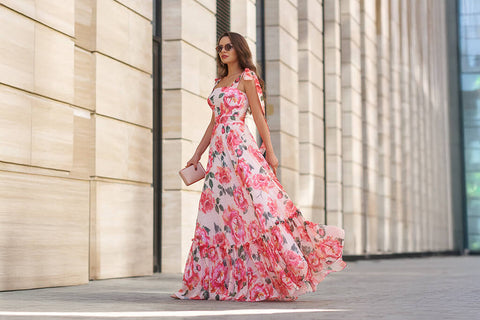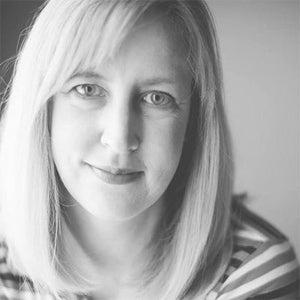- Lightroom Presets
- Mobile Presets
-
Photoshop
-
Learn
-
Support
-
Install
- Best Sellers
- Blog
By Gayle Vehar on | No Comments

Modules - this is a word you will hear around Lightroom a lot. Just think of Lightroom’s Modules as different sections of Lightroom. Each module (or section) does something completely different.
Today we will cover one of the two MOST important modules for beginners: The Lightroom Library Module!
Where can you find and access these Lightroom Modules?
The different Modules are found at the top of the main Lightroom window. To move to a different module, all you need to do is click on it’s name and you are there!

Tip: You should also know that throughout all the modules the “sideways triangle” means “Click on me! There are more options inside.” If you remember this little tip, you will be well on your way to rocking Lightroom!
The Library Module is the module that will open when you first launch Lightroom. It is also the place where you will manage and organize all of your photos. This makes perfect sense because when I think of a Library I imagine rows of books organized to the max!

There are lots of very helpful panels contained within the Library Module. Here's an overview:
The Navigator Panel can be found in ALL Lightroom modules. It allows you to see a small preview of your photo. This panel also gives you several options for zooming into your photo. The image below summarizes the main options.

As you zoom in, you will see a small rectangle appear over your photo. This will show you the area that you are zooming in on. If you click and drag on that rectangle you can change the area that appears in the zoom.
The Folders Panel is where you will find the photos you have imported. The folders should look similar to how they look on the drive the photos are stored on.
The grid of photos shown in the center will vary based on which folder you have selected. Right-click on the folder title to find options for renaming, removing, adding or hiding parent folders.
Important: Anytime you want to rename, move or remove image files that you have made Lightroom aware of, make sure to do it from WITHIN LIGHTROOM. That will help you avoid getting the dreaded “missing” folders in Lightroom.

The Collections Panel is where you can create collections and smart collections.
Think of Collections as ways to group certain photos together. For example, I usually make a collection of my favorite images from each client shoot. Collections are an easy way to find and navigate to through each of the Modules whereas folders are not.
Smart Collections allow Lightroom to use metadata about your images to locate and collect them. For instance, I create a smart collection to find all my favorite family images each year. It pulls all images with a certain rating, shot between certain dates, and in a certain folder into a collection for me. Viola! All my favorite family images in one spot!

The Publish Services Panel is used to allow you to publish photos to online services where you share your photos or to a spot on your hard drive.
The ones shown in the image below are the ones I use regularly or the ones that came standard with Lightroom. There are other services you can add for free or a small fee, including: Zenfolio, SmugMug, Dropbox, Google Drive, 500px, etc.
Just click “Find More Services Online” and click the Lightroom icon on the left to find these.

On the set of right-hand panels you will find Quick Develop. This is exactly what it implies - a quick place to apply some developing to your images.
It is definitely not as powerful as the Develop Module (which I will cover next) but you can use this to make small adjustments, including cropping, white balance and applying any of your presets.

On the same side as the Quick Develop Panel, you will also find Keywording. Not everyone will find this panel useful, but anyone who shoots stock photography will find the keywording panel essential.
You can add Keywords simply by typing them in the box. Or, you can choose previously used Keywords that will pop-up in the boxes below.
Just below Keywording, you will find your Keyword List - a list of all the keywords you have applied to photos in your catalog.
In the metadata section, you can see much of the information that Lightroom has saved about your photo - like all the settings you used when you took you photo: the time and date it was captured, what camera you used, and what lens you used and much more.
All of this metadata information can be used to filter your photos. The filter bar is found above the grid view of your photos.
The toolbar section is found below the Photo Grid. It gives you tools for rating or flagging photos, sorting and comparing, comparing and surveying photos, and changing the size of your thumbnails.
If you don’t see any or all of these tools, move to the little triangle on the right-side of the tool bar. Once you click the triangle, you will see all the tool options drop down. Any that are unchecked will not visible on your bar. Clicking the tool you want will allow it to show up on your tool bar.

Make sure to read the rest of our series to help you Master Lightroom. If you’ve missed any of the posts, you can read/review them at any time by clicking these links!
Day 1. The Lightroom Catalog
Day 2. Lightroom Import
Day 4. Lightroom Develop Module
Day 5. Basic Lightroom Editing Workflow
Day 6. How to Use Lightroom Presets
Day 7. Lightroom Export and Everything Else
Do you have any questions or comments about the Lightroom Library Module? Just leave us a comment below - we would LOVE to hear from you. And PLEASE SHARE this post using the social sharing buttons (we really appreciate it)!




Hi!! I am Gayle. I am a wife to my handsome husband and mom to 4 beautiful kids. In my spare time, I am a photographer and blogger at Mom and Camera. I have a passion for sharing my love of photography with others. I teach local photography classes and regularly share photography tips and tricks on my blog. I hang out there a lot—I’d love you to stop by and visit!

Comments